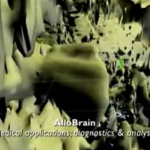neuroscience
Music can be thought of as a form of emotional communication, with which the performer conveys an emotional state to the listener. This "language" is remarkably powerful - it can evoke strong emotions, and make your heart race or send tingles down your spine. And it is universal - the emotional content of a piece of music can be understood by anyone, regardless of cultural background.
Are the emotions evoked by piece of music similar to, and can they influence, other emotional experiences? The answer to these questions is unclear. But a new study, which has just been published in…
Most people are aware that social insects, like honeybees, have three "sexes": queens, drones and workers.
Drones are males. Their only job is to fly out and mate with the queen after which they drop dead.
Female larvae fed 'royal jelly' emerge as queens. After mating, the young queen takes a bunch of workers with her and sets up a new colony. She lives much longer than other bees and spends her life laying gazillions of eggs continuously around the clock, while being fed by workers.
Female larvae not fed the 'royal jelly' emerge as workers.
Workers perform a variety of jobs in the hive.…
When it comes to the human brain, even the simplest of acts can be counter-intuitive and deceptively complicated. For example, try stretching your arm.
Nerves in the limb send messages back to your brain, but the subjective experience you have of stretching isn't due to these signals. The feeling that you willed your arm into motion, and the realisation that you moved it at all, are both the result of an area at the back of your brain called the posterior parietal cortex. This region helped to produce the intention to move, and predicted what the movement would feel like, all before you…
Many readers of Terra Sig and the larger ScienceBlogs community likely remember former neuroscience graduate student blogger, Shelley Batts. Shelley originally launched Retrospectacle and she and I (and ~25 others) joined Sb in June, 2006, second wave. When she put the hammer down to finish her PhD at the University of Michigan (former home of Dr John Jacob Abel), she shut down Retrospectacle and joined forces with Steve/Omnibrain at Of Two Minds.
Shelley earned her PhD last December, headed off to postdoc at Stanford, and got engaged to her high school sweetheart, Luke Rumsey.
Well, while…
I am pretty much on record that I would not pay for anything online (to be precise, to pay for content - I certainly use the Web for shopping). But with some caveats. I have been known to hit a PayPal button of people who provide content and information I find valuable. And I would presumably pay, though not being happy about it, if the information behind the pay wall is a) unique (i.e., not found anywhere else by any other means) and b) indispensable for my work (i.e., I would feel handicapped without it).
But I am not subscribed to, or paying for, anything right now and haven't been in…
The autism spectrum disorders (ASDs), including autism and its milder cousin Asperger syndrome, affect about 1 in 150 American children. There's a lot of evidence that these conditions have a strong genetic basis. For example, identical twins who share the same DNA are much more likely to both develop similar autistic disorders than non-identical twins, who only share half their DNA.
But the hunt for mutations that predispose people to autism has been long and fraught. By looking at families with a history of ASDs, geneticists have catalogued hundreds of genetic variants that are linked to…
Razib and I have a discussion up at Bloggingheads.tv about genetics and behavior as well as a brief discussion of neuroeconomics. Check it out below the fold:
If you missed it before, I have written about this kind of research before - this is interesting stuff, as much as the video is just plain funny (video, hat-tip: Psique).
The episode is titled "your brains & your genes." There's more emphasis on economics than you think.
Having your arm in a cast can be a real pain but immobilising your hand in plaster has consequences beyond itchiness, cramps and a growing collection of signatures. Silke Lissek from Bergmannsheil University found that just a few weeks in a cast can desensitise the trapped hand's sense of touch, and lower neural activity in the part of the brain that receives signals from it. The uninjured hand, however, rises to the occasion and picks up the sensory slack by becoming more sensitive than before.
Lissek recruited 31 right-handed people, each of whom had one fractured arm encased in a cast,…
We all know Twitter can be annoying, but is it really evil? During the past week, you may have heard that there is brand-new neuroscientific evidence proving exactly that. But the hype turns out to be just that: hype.
It all started with a press release from USC about an upcoming PNAS paper by Mary Helen Immordino-Yang and Antonio Damasio, entitled "Neural Correlates of Admiration and Compassion." The USC press release, which was picked up by EurekAlert and other outlets, says:
The finding, contained in one of the first brain studies of inspirational emotions in a field dominated by a focus…
In her recent TED talk, JoAnne Kuchera-Morin described UCSB's AlloSphere, a new project that enables scientists to literally stand inside a three-story projection of their data:
The AlloSphere space consists of a 3-story cube that is treated with extensive sound absorption material making it one of the largest anechoic chambers in the world. Standing inside this chamber are two 5-meter-radius hemispheres constructed of perforated aluminum that are designed to be optically opaque and acoustically transparent. (source)
Scientists and artists can stand on a bridge through the center of this…
There is a fascinating case study in Current Biology.
de Gelder et al. discuss a patient -- referred to as TN to protect his privacy -- who had two sequential strokes that damaged his brain. The parts of the brain that were damaged included the primary visual cortex in both hemispheres -- rendering the patient blind. However, the patient could still respond to some visual stimuli through a phenomenon called blindsight.
Even more interesting, the patient could still navigate around visual objects, while reporting being unable to see them and having no memory for what they were.
I have…
I don't think I am alone in saying that I often feel a little envy and schadenfreude towards my peers. Science is a particularly competitive business with few remunerative rewards, so a lot of my self-worth is tied to comparisons with my peer's successes and failures. I won't deny being envious when someone gets a Science paper. And while seeing the abject failure of my peers isn't high on my list of priorities, I won't deny the small satisfaction that I get when someone who breezed through their PhD gets taken down a peg.
These aren't happy-joy-joy emotions. They don't make me swell with…
Learning a new language as an adult is no easy task but infants can readily learn two languages without obvious difficulties. Despite being faced with two different vocabularies and sets of grammar, babies pick up both languages at the same speeds as those who learn just one. Far from becoming confused, it seems that babies actually develop superior mental skills from being raised in a bilingual environment.
By testing 38 infants, each just seven months old, Agnes Melinda Kovacs and Jacques Mehler have found that those who are raised in bilingual households have better "executive functions…
If you look at a waterfall for about 30 seconds, and then shift your gaze to a nearby stationary object, such as a rock or a tree, that object will seem to drift slowly upwards. This well known optical illusion demonstrates a phenomenon called the motion after-effect, which is thought to occur as a result of adaptation - the brain compensates for movement in one direction, causing us to momentarily perceive a stationary objects to be moving in the other.
Although illusory motion can also be induced in the sense of touch, the brain is thought to process visual and tactile motion separately.…
Sponges are among the most primitive of all animals. They are immobile, and live by filtering detritus from the water. They have no brains or, for that matter, any neurons, organs or even tissues. If you were looking for the evolutionary origins of animal intelligence, you couldn't really pick a less likely subject to study.
So it was with great surprise that Onur Sakarya from the University of California, Santa Barbara found that sponges carry the beginnings of a nervous system.
With no neurons to speak of, these animals still have the genetic components of synapses, one of the most…
This detailed medical illustration by the late Duncan Winter shows the advantages of a good medical illustration over a typical photograph. There are no problems with over- or under-exposure, no depth-of-field issues, and the salient features are subtly emphasized. The underside in particular is very impressive work - there's a lot going on down there and it's really tough to draw clearly.
From the medical illustration flickrset by Bottled Monsters
The title of this pre-publication paper is, "Evidence on the emergence of the brain's default network from 2-week-old to 2-year-old healthy pediatric subjects." The authors put kids in functional MRIs to measure resting state activity and detect the emergence of the default network.
While I am certain that it is very interesting research, I have a more technical question: minus sedation, how in Heaven's name did they get the kids to sit still long enough to collect the data? An fMRI is hardly a crib decorated with puppies and ducklings. You feel like you are about to be shot out of a…
The journey undertaken by newly generated neurons in the adult brain is like the cellular equivalent of the arduous upstream migration of salmon returning to the rivers in which they were hatched. Soon after they are born in the subventricular zone near the back of the brain, these cells migrate to the front-most tip of of the olfactory bulb. This is the furthest point from their birth place, and they traverse two-thirds of the length of the brain to get there.
The first leg of this epic journey - the departure of the newborn cells from the subventricular zone - involves some of the…


